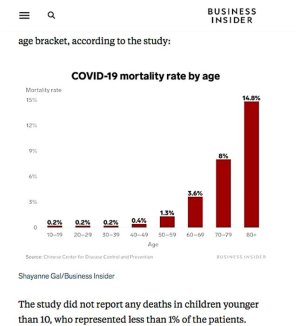The economy has ground to a near standstill, and many small businesses say they may soon run out of cash. Patients with critical illnesses are struggling to find timely care, and some have died. Hundreds of millions of people have been placed in some form of isolation. As of Friday, about 827,000 people remained under quarantine in Beijing, according to the state-run China Daily newspaper...
For China, the numbers are key.
The number of cases reported on Saturday was a substantial decline from two and a half weeks ago, when China was recording around 2,000 new infections and as many as 100 deaths a day. Twenty-eight new deaths were reported on Saturday, all in Hubei...
The impact of the restrictions has been felt most acutely in Hubei, where 56 million people have been effectively penned in since January. For more than five weeks, the typically bustling hub of universities, commerce and transportation has been transformed into a collection of ghost towns as the virus has ravaged communities, ensnared entire families and infected thousands of medical workers.
China’s experience combating the virus has also highlighted the risk of family transmission if hospitals run out of beds and testing kits, as they did in Wuhan, where for weeks, many who were sick were sent home and infected their relatives.
Roadblocks have sealed off cities, public transportation has been shut down and private cars have been mostly banned from the roads. In Wuhan, restrictions on individual movement have been stepped up in recent weeks, with residents now mostly barred from leaving their homes.
Among residents in Hubei, there are signs that anger and frustration are mounting. Chinese social media sites are flooded with posts from residents saying they have lost their jobs because of the extended lockdown, making it difficult to make payments on mortgages and loans. Others have described food shortages in their communities.



